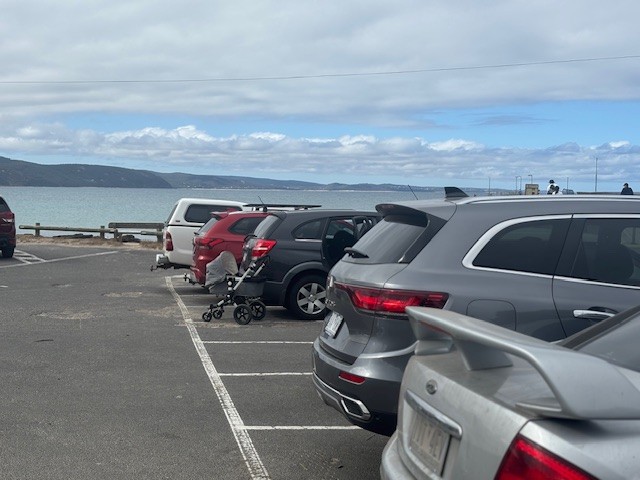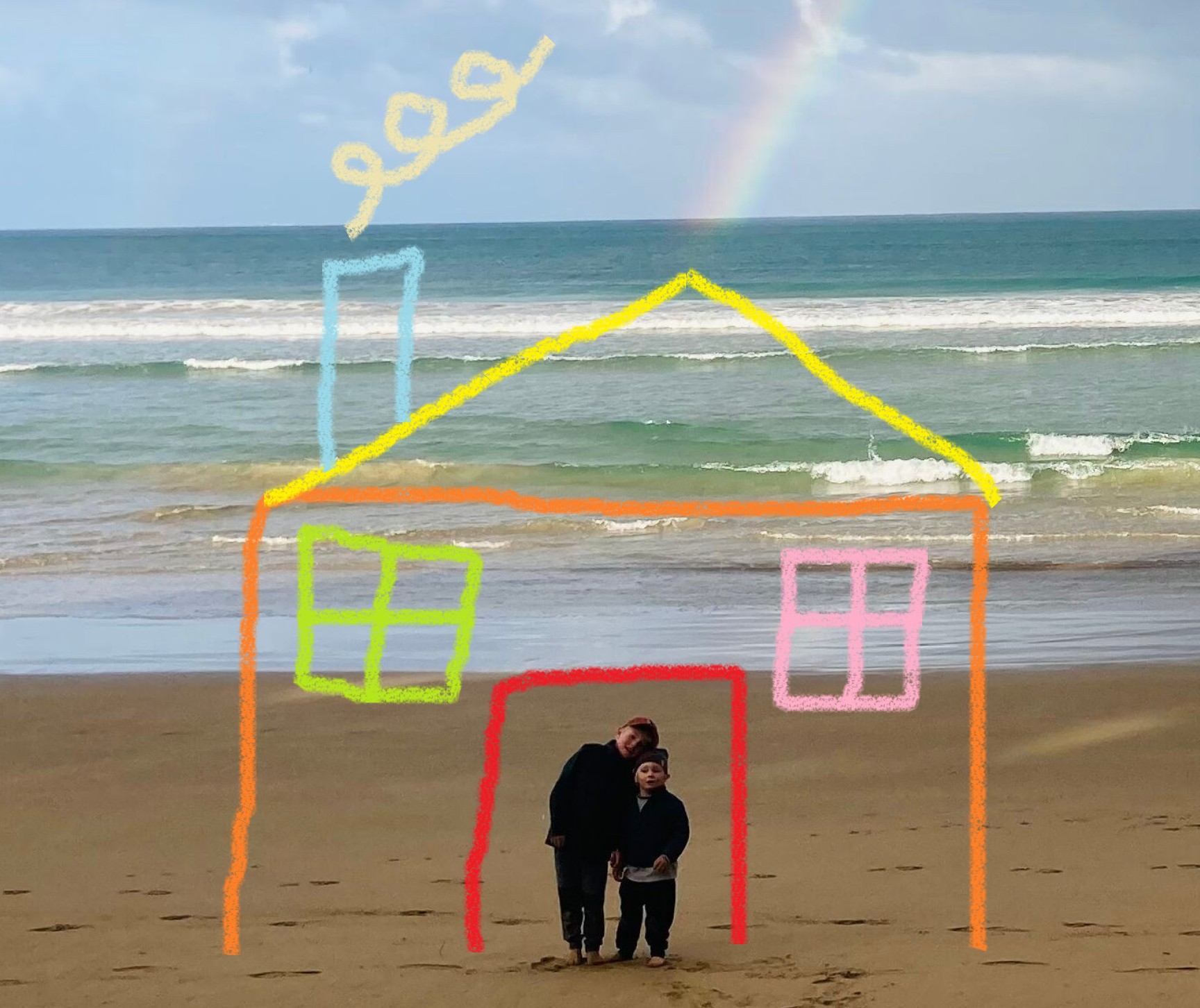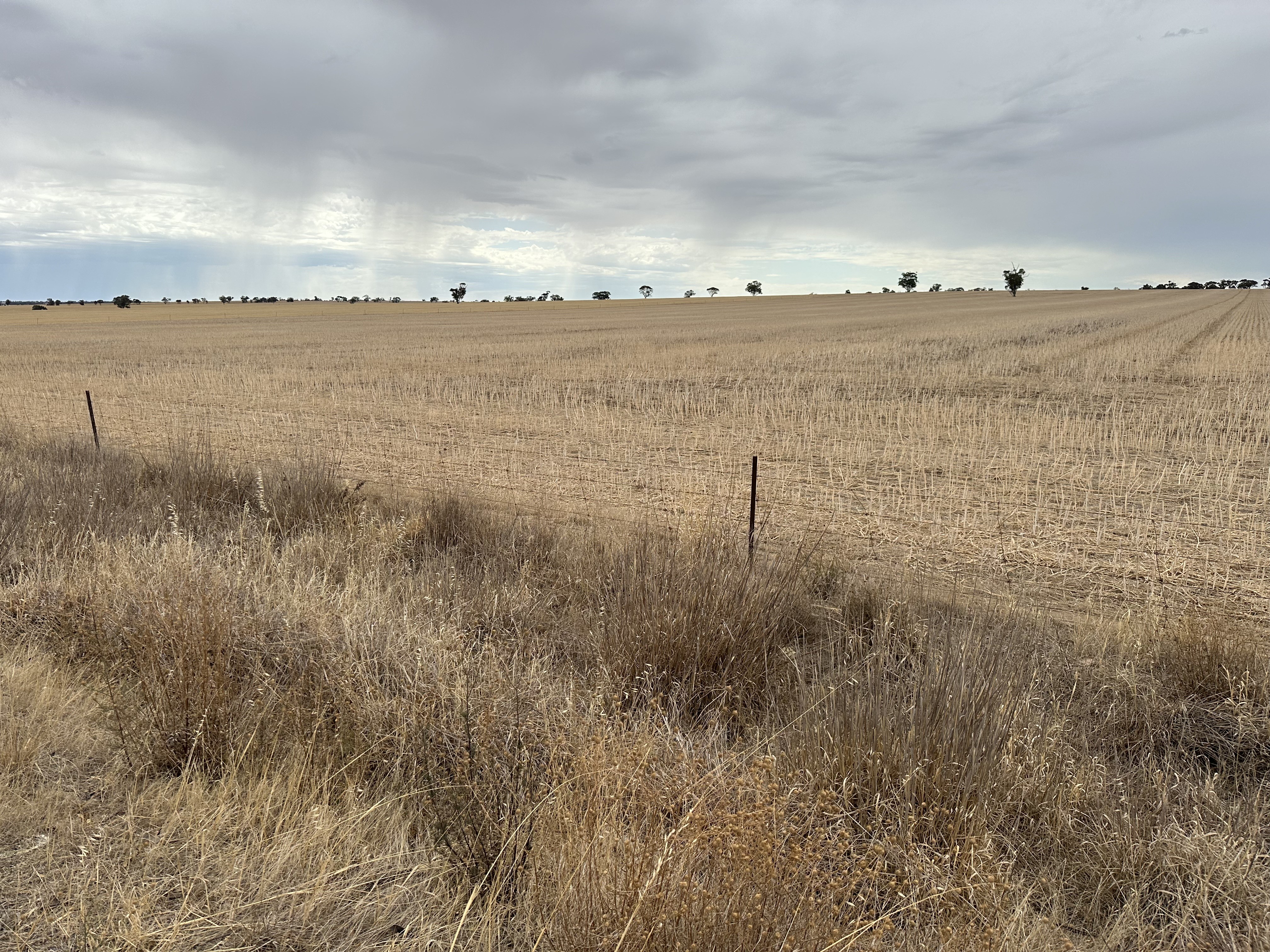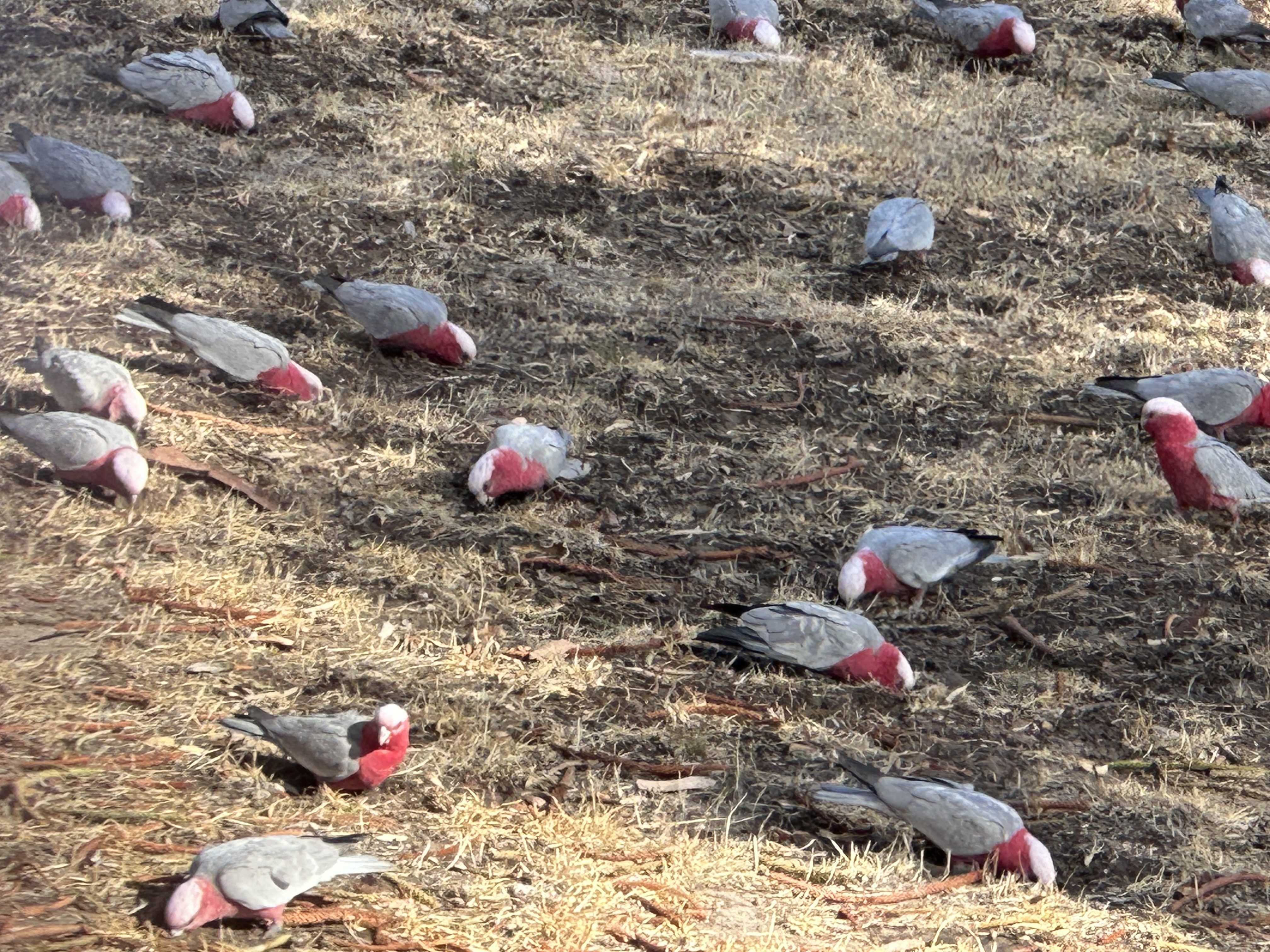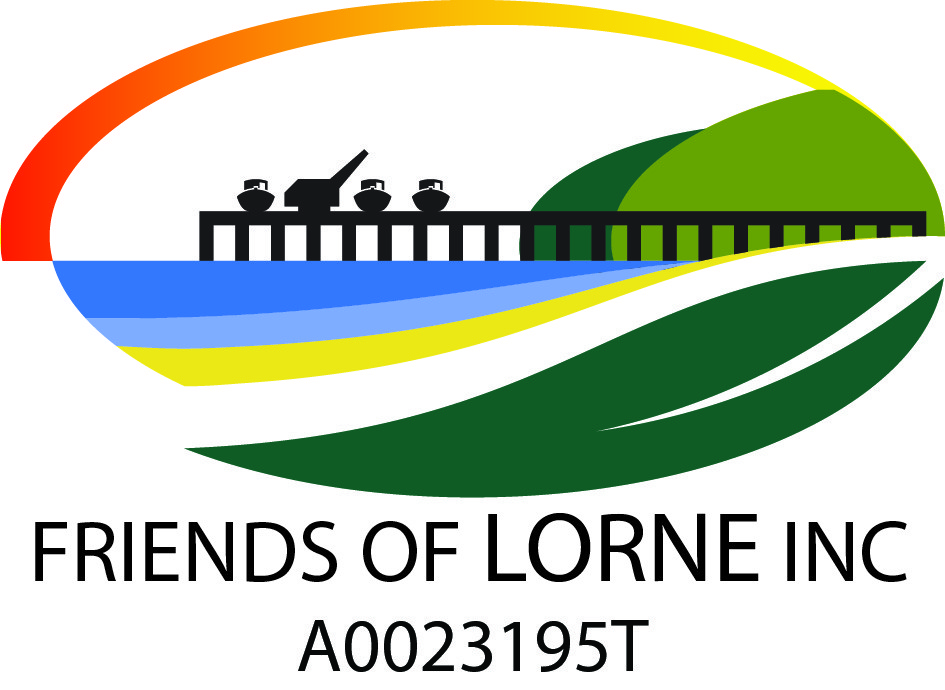
Occasional Newsletter,
March 2025
Pt Grey cars, boats & confidentiality
The February meeting of the Pt Grey Reference Group focussed entirely on traffic and traffic management. It is important you know this, in case you take fright and think that GORCAPA has forgotten everything else we ever said. We are assured that they have not. Here is what the community were advised after the last meeting.
- Outside of coastal hazard adaptation planning, traffic and transport engineering and design will have the most significant influence on the development outcome at Point Grey.
- Any traffic and transport configuration must meet modern design specifications and safety standards, in line with the Austroads Guide to Road Design and the Victoria Planning Provisions.
- GORCAPA are currently investigating four traffic and transport design options, each with different outcomes and impacts on site functionality and usability.
- The project team and consultants are weighing the pros and cons of each, and the reference group’s feedback helped.
GORCAPA advises that the big considerations have to be:
• Boat trailer movement, parking and beach access.
• Emergency service vehicle access (fire truck and ambulance).
• Universal accessibility (all abilities and disabled parking and access).
• The LAAC’s desire for a boat wash, directly adjoining their clubhouse building (in line with the community aspiration to retain the LAAC in its current location).
• Pedestrian access and public safety (both pedestrian and vehicle).
• Safe and compliant traffic movement and management.
• Land zoning as a public park and provision of public open space.
• Coastal hazard risk adaptation.
• Cultural heritage management and contributions from the Eastern Maar Aboriginal Corporation
• Geotechnical constraints related to topography and cut-and-fill restrictions.
• Car parking provisions for the LAAC, food and drink premises, and public park.
• Minibus and LAAC courtesy bus movement and parking.
• Impact on existing trees from traffic and transport infrastructure
• Visual impact of traffic and infrastructure on the coastal environment, including views to and from the pier.
GORCAPA plans to have an urban design framework released for community consultation in June this year with a project completion date in mid-2026.
A big thanks to Mary Rose Yuncken for representing us on this group.
Confidentiality concerns now alleviated
One handicap has been that at the beginning of this process community participants in the Reference Group were asked to sign a confidentiality agreement. This applied for all the major projects that GORCAPA is working on as part of the Geelong City Deal projects (including Pt Grey). We thought this undermined the role of our community representatives. How can you represent the community if, outside the meeting, you can’t talk freely about what information is on the table and what options are being considered?
Friends of Lorne and other member organisations of the GORCN (Great Ocean Rd Communities Network) were highly concerned and sought a meeting with the GORCAPA CEO.
Happily, we can now report that GORCAPA understands the issue and that steps have been taken to make sure that there is maximum opportunity after each meeting for communication on all matters that the community are involved with. That is, only sensitive commercial or highly technical matters are not communicated. Then on the 25th March we were advised that the confidentiality clauses were removed altogether.
_____________
Worker housing application update
Thank you to the members who got back to us with feedback about the way we responded to the issue of an unconditional letter of support being given to an application for a Regional Worker Accommodation Grant for housing for key workers.
In short, we are in favour of key worker housing. But we did not think the Committee for Lorne (CfL) should have given unconditional support to an application that had not been fully described and shared with the CfL, that was only required to supply accommodation for 5 years (thereafter it can revert to holiday accommodation) and was seemingly going to be used by one employer only. As the proposal is 50% taxpayer funded, we thought the local community should be able to view it and have a say about whether we supported it or not under what conditions.
Early advice to us from Council was that fast-track rules applied, meaning that VCAT appeal rights are set aside. We are now advised that this is not the case. Advertising and approval processes will be as normal, but the application will benefit from “housing concierge” meaning that it will be dealt with promptly. The Surf Coast Council has not had any experience with these grants before and they are waiting to confirm this understanding from other Councils who had successful grants in their areas in 2024.
Most comments we got from Friends of Lorne members supported our non-support of the CfL unconditional letter of support. One person agreed with the CfL decision, saying that a temporary (5 year) fix is better than none at all, given the size of the problem.
The CfL has offered to reflect on the process of having supplied the letter at their next meeting. That is, what is the CfL’s rightful role in developing and/or supporting different housing options? It is new territory and worth discussing.
The success or otherwise of the application will be known in May. Meanwhile the applicant has heard the concern of Friends of Lorne. He has reached out to Friends of Lorne and agreed to present his proposal to a Zoom meeting on Tuesday 18 March at 5pm. If you wish to take part, email us at committee@friendsoflorne.org.au
Be aware that at the Legislative Assembly Environment and Planning Committee’s Inquiry into the supply of homes in on regional Victoria we took the opportunity to criticise the Regional Worker Accommodation Grants. Friends of Lorne were invited to present to the inquiry. We said that in contexts like ours a 20-year period of availability for workers would have been a better grant condition. Each community is different. For some, 5 years might be just fine. Rather than imposing blanket conditions across the state, we suggested that it would be more sensible for letters of support to be one way to ascertain best duration (ie., best fit) for local context. So, thanks again for those who chimed in with thoughts and recommendations. We are guided by them.
______________
Hoodie chicks thriving at Aireys Inlet
OK, so it’s not Lorne. Our own hoodie parents this year have tried three times and the nest has failed (various reasons). But they are still hanging about and enjoying the (former) protection zone in front of the Mantra like it was home. The area won’t be roped off unless there is nest. But this late in the season, we are told it is unlikely.
Meanwhile at Aireys Inlet, a few Friends of Lorne members have joined other volunteers to stop dogs and to guide people at a safe distance from two hooded plover parents and three chicks. This is the first time in five years for chicks to get past the first week at Aireys. So there is a lot of excitement. The chicks are now nearly four weeks old and almost up to the stage of development where they jump and try to use their wings. They look a bit like those wacky fun-loving daredevils at Moomba who end up in the Yarra.
GORCAPA was approved to bring in a shooter to kill three foxes seen in the vicinity. So that has really helped with the chicks’ survival to date.
The nest itself was more than a metre above the beach up in the dunes. Because chicks must feed themselves from Day 1, the GORCAPA field staff watched on with binoculars for as long as they could at the beginning. Three little heads were visible on the edge of the nest. But unfortunately, the moment of leaping out of the nest and rolling down the hill on to the beach was missed by any human.
At 35 days old they should be able to fly. If you want to get on the roster and/or learn how to be a ‘guardian,’ then please email Janice Carpenter at janicejohnoz@yahoo.com.au Every bit of extra help is appreciated.
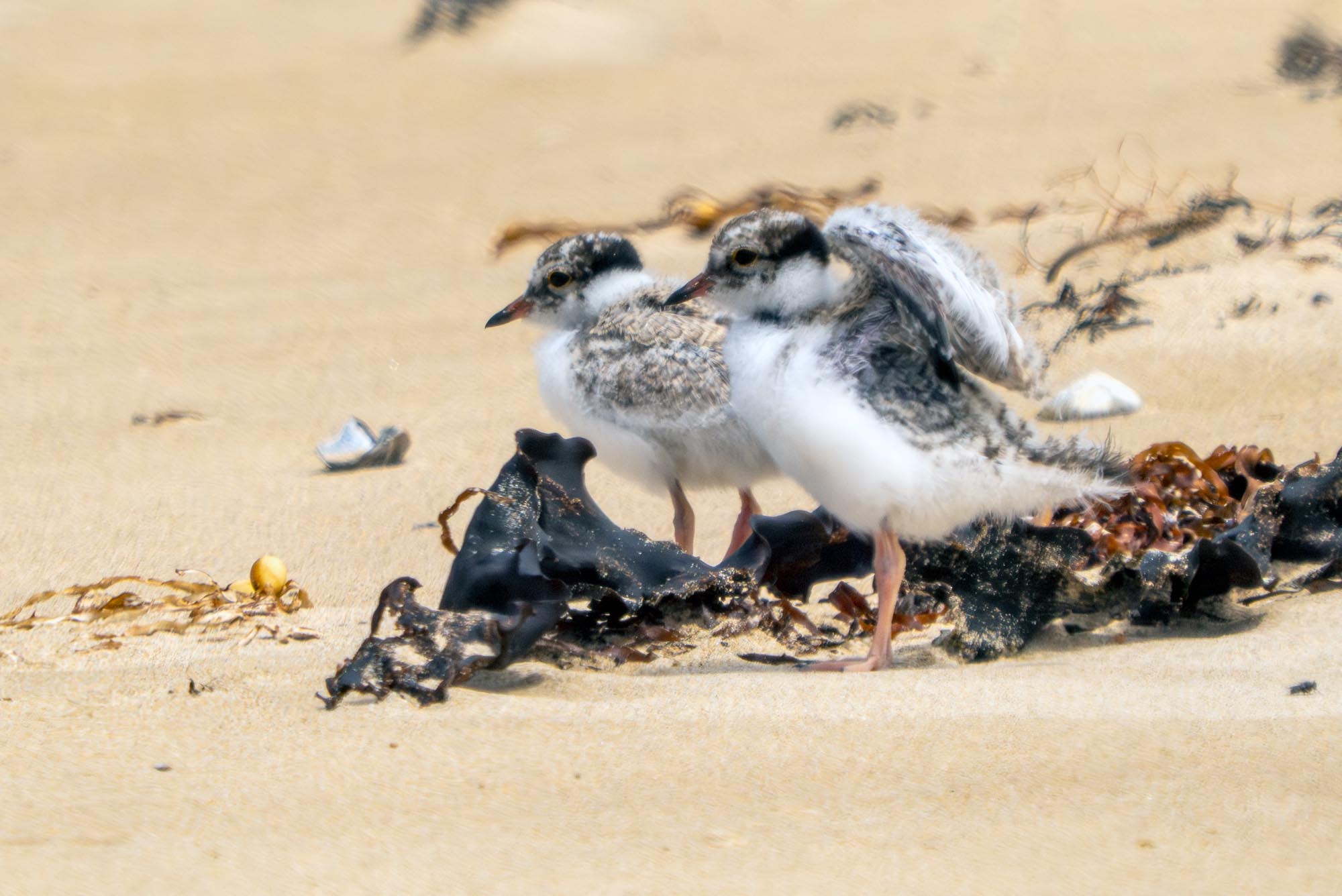 Last season’s Lorne chicks, aged about 2 weeks. Photo by Michael Prideaux (in keeping with BirdLife Aust guidelines). One of these chicks was tagged and was a parent themselves this season. Unfortunately his/her nest was on an off leash dog beach in Torquay and those chicks perished.
Last season’s Lorne chicks, aged about 2 weeks. Photo by Michael Prideaux (in keeping with BirdLife Aust guidelines). One of these chicks was tagged and was a parent themselves this season. Unfortunately his/her nest was on an off leash dog beach in Torquay and those chicks perished.
__________________________________
NATURE NOTES
Weather Extremes
Eva J Youl
Cyclone Alfred wasn’t. It became Ex-cyclone Alfred but at this time of writing it is still causing havoc in Queensland and NSW. The amount of rain falling is record breaking. According to BOM on Sunday 9th March, 295mm of rain smashed Hervey Bay in just six hours.
Meanwhile southern parts of Australia, not forgetting Tasmania, have been experiencing drought. Western Victoria in 2024 went through what was called a ‘green drought’. This was a failed spring followed by a failed autumn. Mallee farmers and Northern Districts are generally more accustomed to drought compared to farmers in the Western District.
Driving from Lorne to Adelaide this week I witnessed the DRY countryside. Farmers are hand-feeding stock. It is very sad when stock are not getting enough food. Pregnant cows and ewes need adequate protein and energy to support the foetus. After birth ewes need sufficient nutrition to produce milk for lambs. In 2024 some lambs starved.
So after seeing hand feeding near Kaniva in the Wimmera, we headed into South Australia which is also in a drought. Much of the state has experienced a record dry year. Emergency measures have been put in place in the Adelaide Hills and Fleurieu Peninsular where properties not connected to mains water are having water trucked in. The problem is the wait for delivery. Listening to the Adelaide ABC news, some kids are not going to school because there wasn’t water to wash their school uniforms.
So far I haven’t even mentioned wildlife. We saw a mob of five kangaroos near Normanville, SA, and we think they are living on their memories. Kangaroos do have adaptations for drought with one of the most interesting being embryonic diapause. This means that the development and birth of the next joey in the uterus is delayed, while there is still a joey in the pouch.
So what about birds? The effect of drought conditions varies with habitat and bird species. With less food and water available, some birds have reduced reproduction rates. Some Normanville town people have put water out for birds but big flocks of birds seemed to be on the search for food and water. We saw big flocks of galahs and, near Bordertown, big flocks of corellas.
Plant species save energy during a drought, producing less fruit, seeds and nuts. So planting native plants in your garden can help and, like the people in Normanville, have a water bath for birds. With extreme weather, expect the unexpected.
NOTE: All articles and photos are by the Committee unless otherwise indicated. Contact us at committee@friendsoflorne.org.au
